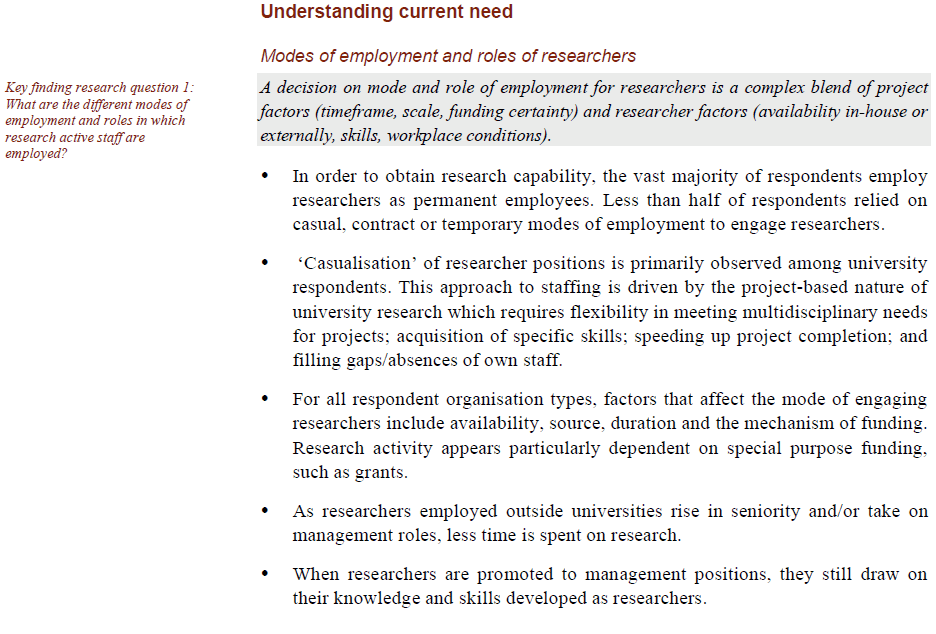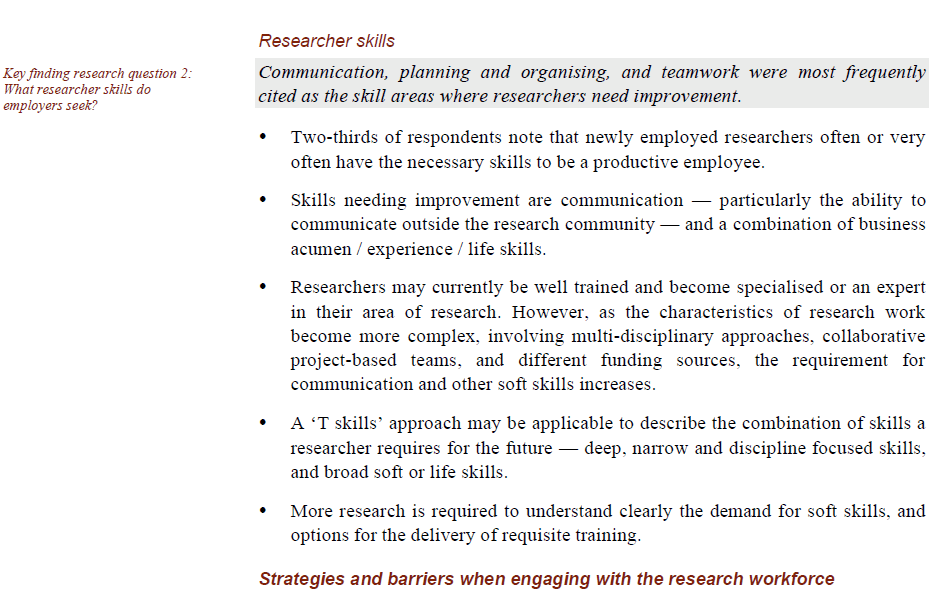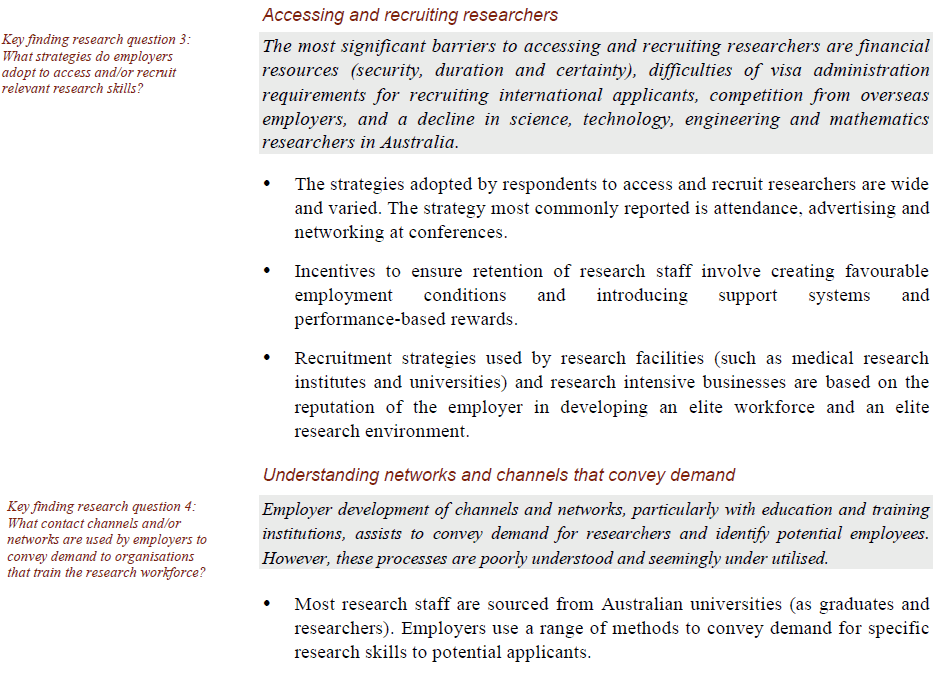|
|
|
|
|
|
|
News & Views item - July 2010 |
![]() Can Employer Demand for Researchers in Australia be Fulfilled? (July 19,
2010)
Can Employer Demand for Researchers in Australia be Fulfilled? (July 19,
2010)
On June 28 TFW reported that the Department of Innovation, Industry, Science and Research was undertaking a series of "public information sessions" following its release of a 49-page consultation paper. The first of the meetings took place in Sydney -- it attracted an attendance of 14 individuals. The last of the five sessions will take place tomorrow in Adelaide.
Prior to the release of the consultation paper DIISR had engaged a "high-level
reference group" of some 17 individuals from academe, industry, and various
representative bodies as well as Access Economics and
The Allen Consulting Group![]() to assess the matter.
to assess the matter.
Furthermore, in July 2006 Julie Bishop, then Minister for Education, Science and
Training in the Coalition Government, released the official
audit of Australia's scientific, engineering and technology skills![]() .
.
In short, four years have past and by the end of next month we will have elected three different prime ministers and the response remains inadequate. as regards the repeated predictions that Australia's universities face difficulties in attracting overseas researchers to counter looming shortfalls in academe thereby leading to an inability to fill the predicted number of individuals with higher degrees by research required for both the private and public sectors. In all probability what will be engendered will be yet more reports, reviews, consultations, high level reference groups and public information sessions with decreasing attendances.
However, DIISR commissioned Access Economics in early 2010 to undertake a quantitative analysis of the likely level and nature of supply of and demand for research-qualified individuals in Australia over the period to 2020. The study examined a number of different scenarios as part of its projections:
o a base scenario;
o a high-growth, globally engaged scenario;
o a low-to-moderate-growth, inwardly focused scenario;
o a green economy scenario; and
o an innovation economy scenario.
The difference plots predict that if Australia is satisfied to lower it its standard of luxury sufficiently, supply may outstrip demand.
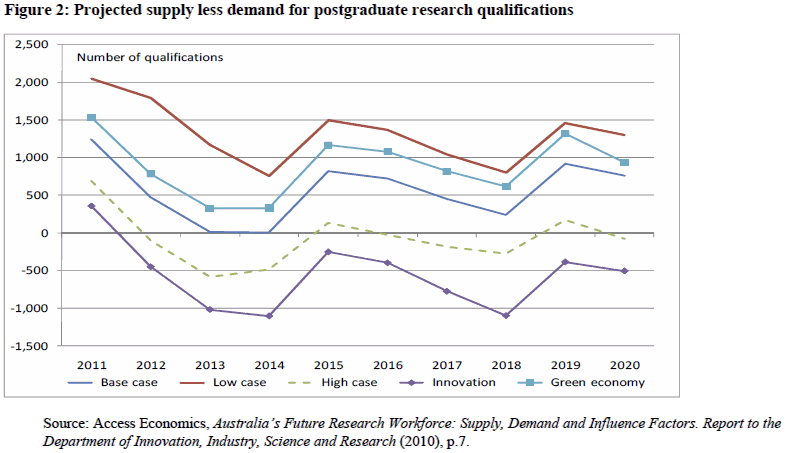
The Allen assessment requested 142 organisations to take part in its survey, 72 complied.
Below are two tables describing the respondents followed by a summary of the 5
key findings based on the 48 overall questions asked (see Appendix I, page 101
of the
Allan report![]() ).
).

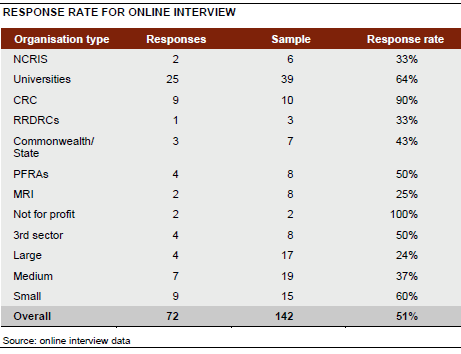
________________________________
